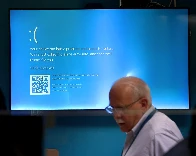I think the answers given here don't quite fit the question.
Android and Windows have dedicated recovery partitions sectioned off on the disk that the OS never boots to and does not interact with during normal system operation.
If something goes wrong with the OS, then a signal is sent to the BIOS or other non-OS system to "hey, recover from this partition".
Btrfs, NixOS, Guix, and other immutable (file-)systems, implement this via having a file system hierarchy protected by various permissions and softlinks to create a checkpoint of sorts, which is managed by a dedicated service that runs with the OS during normal system operation.
The drawback of these systems is that if something does go wrong with the OS, it cannot fallback to the BIOS to save it. The OS has to somehow signal to itself that it needs to restore from an earlier checkpoint.

